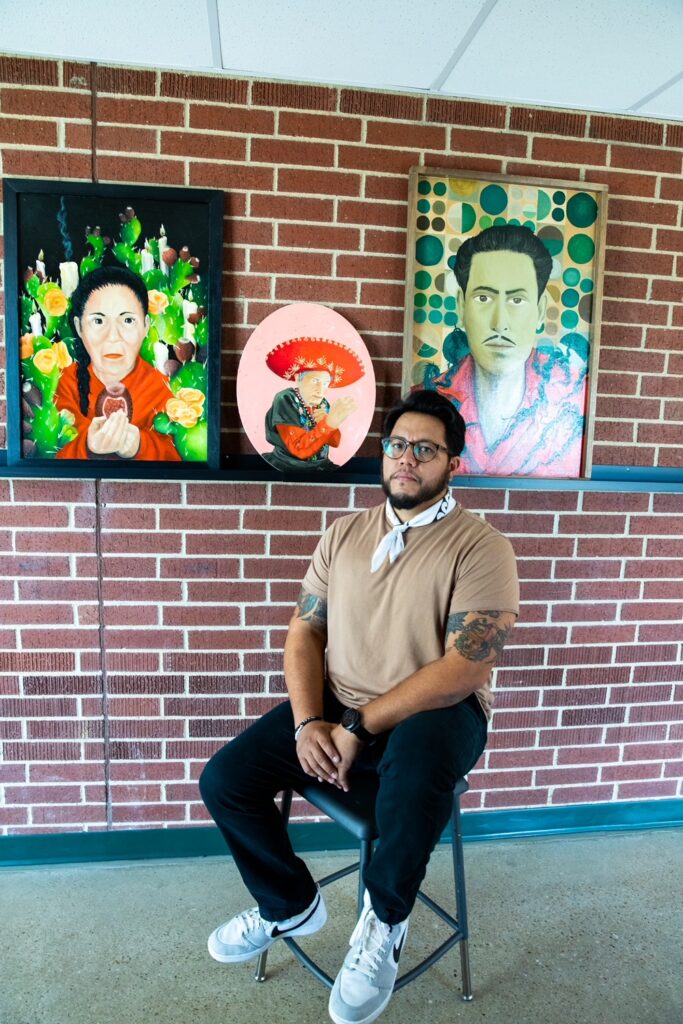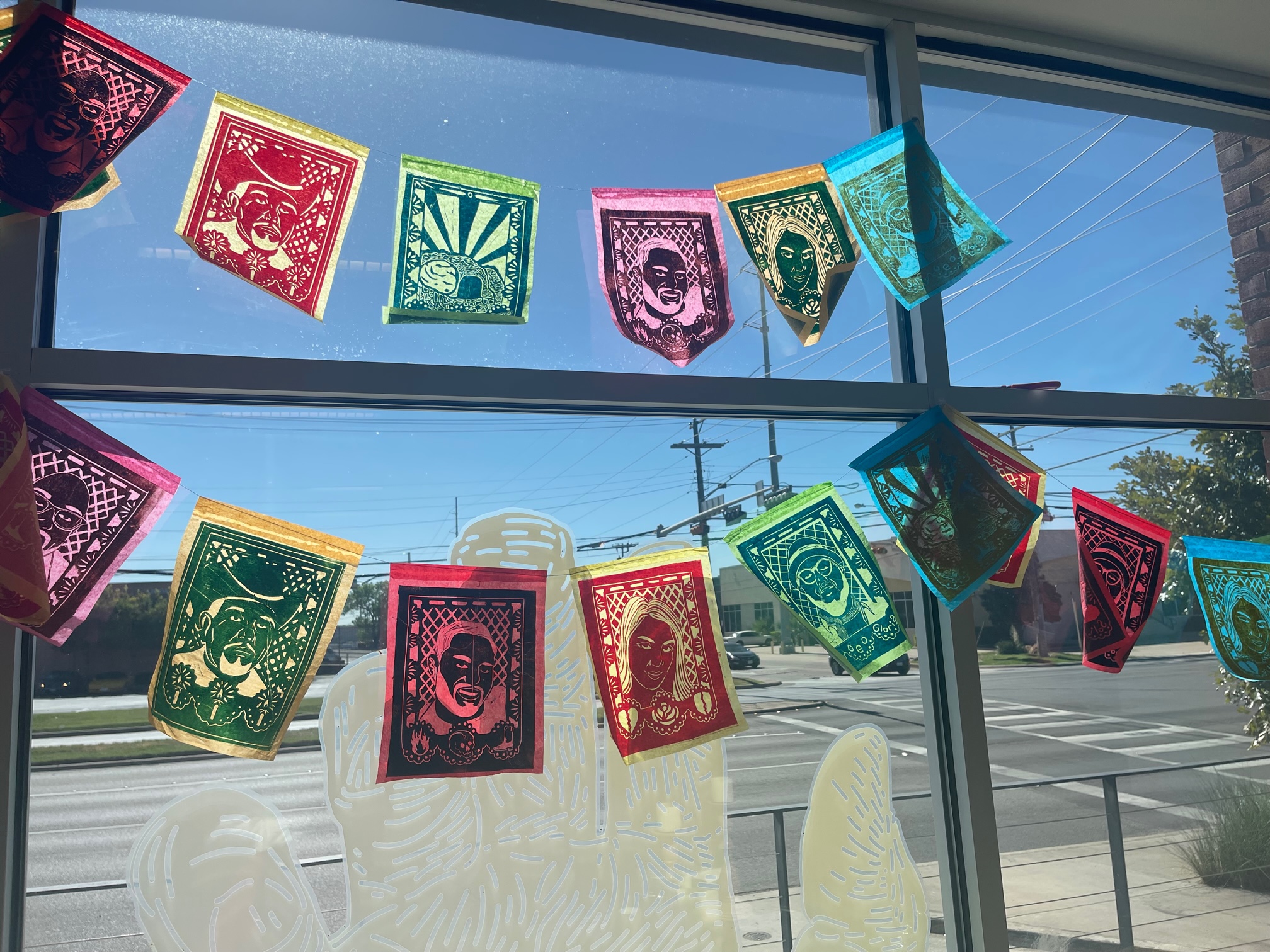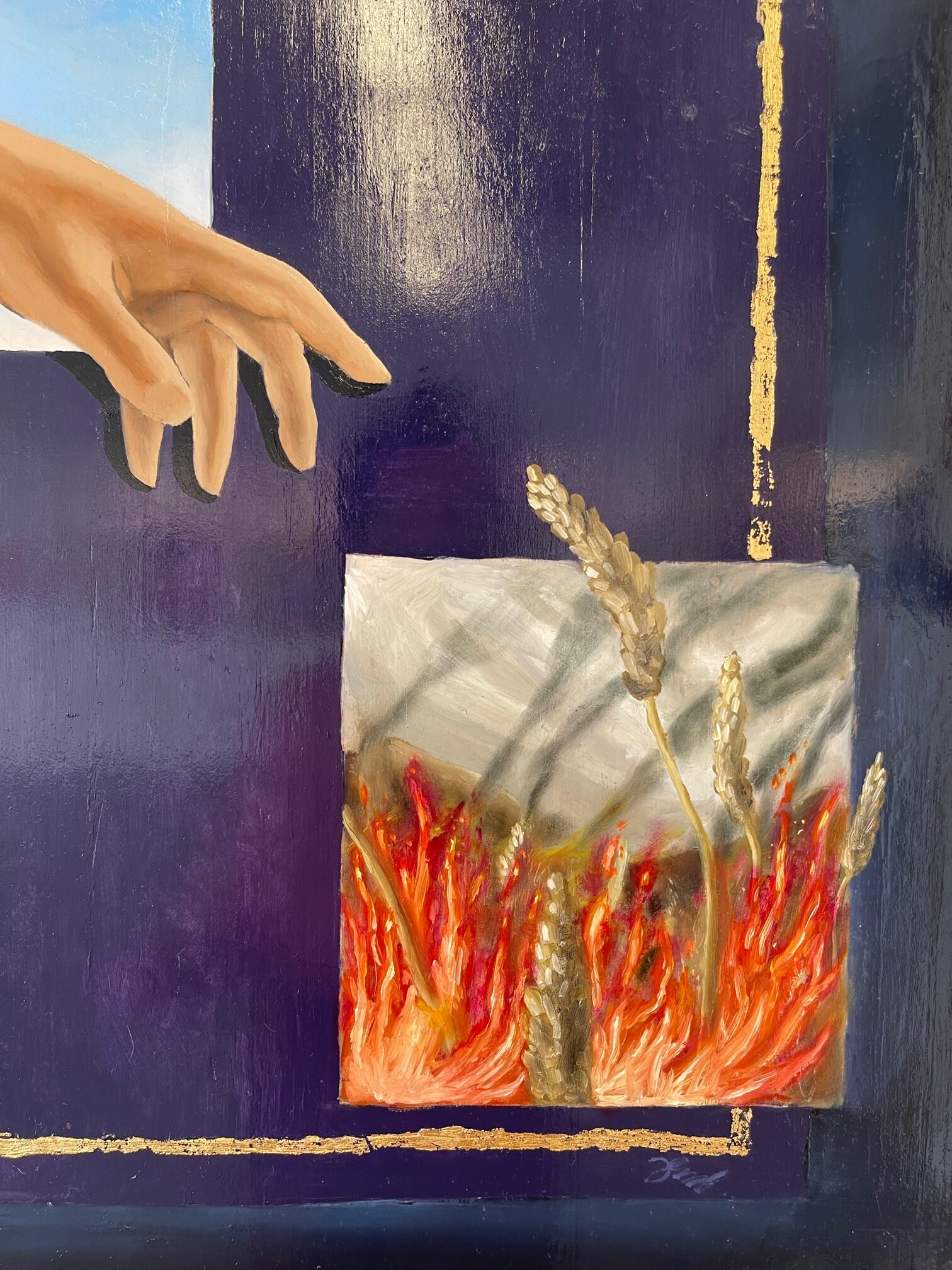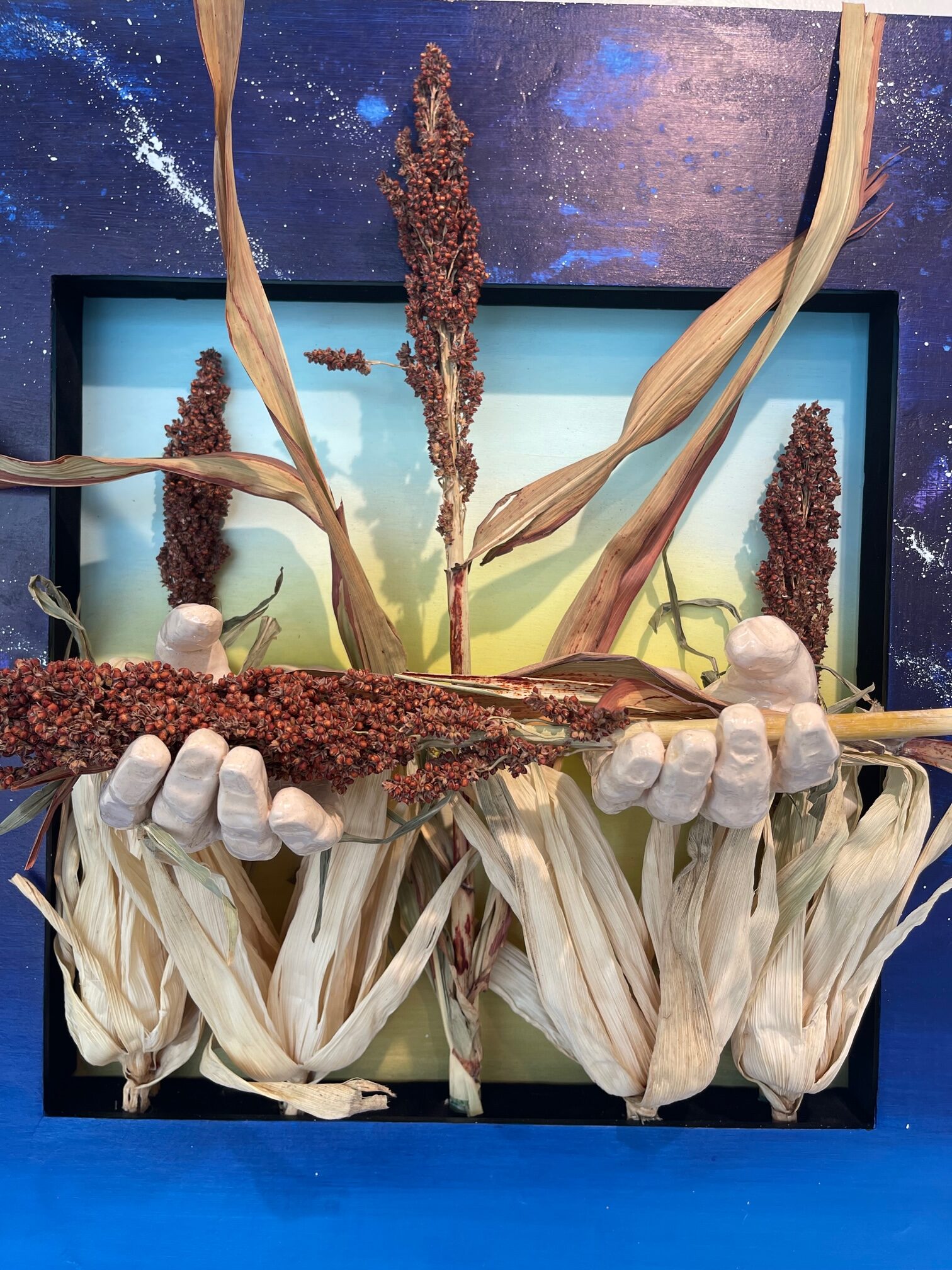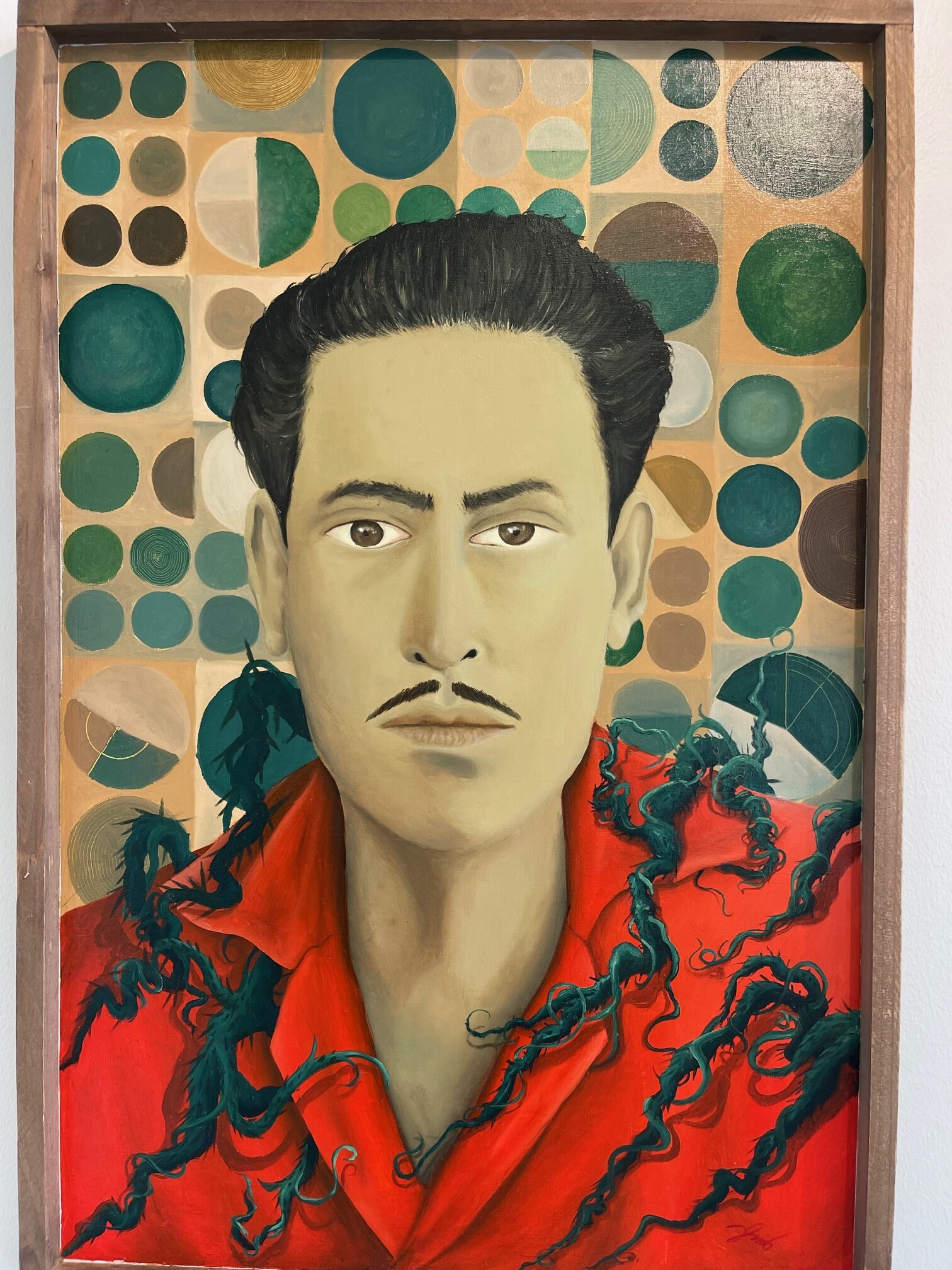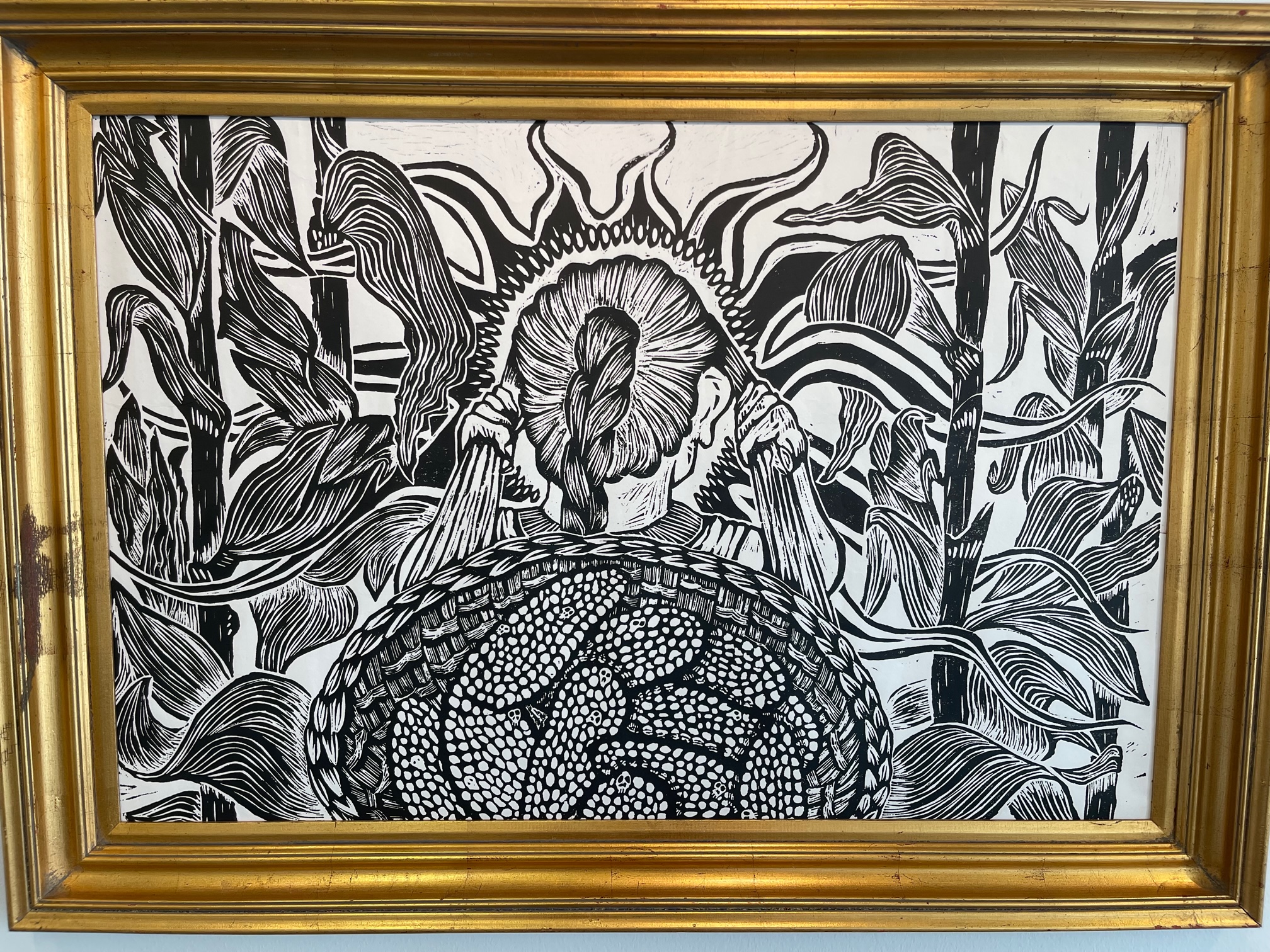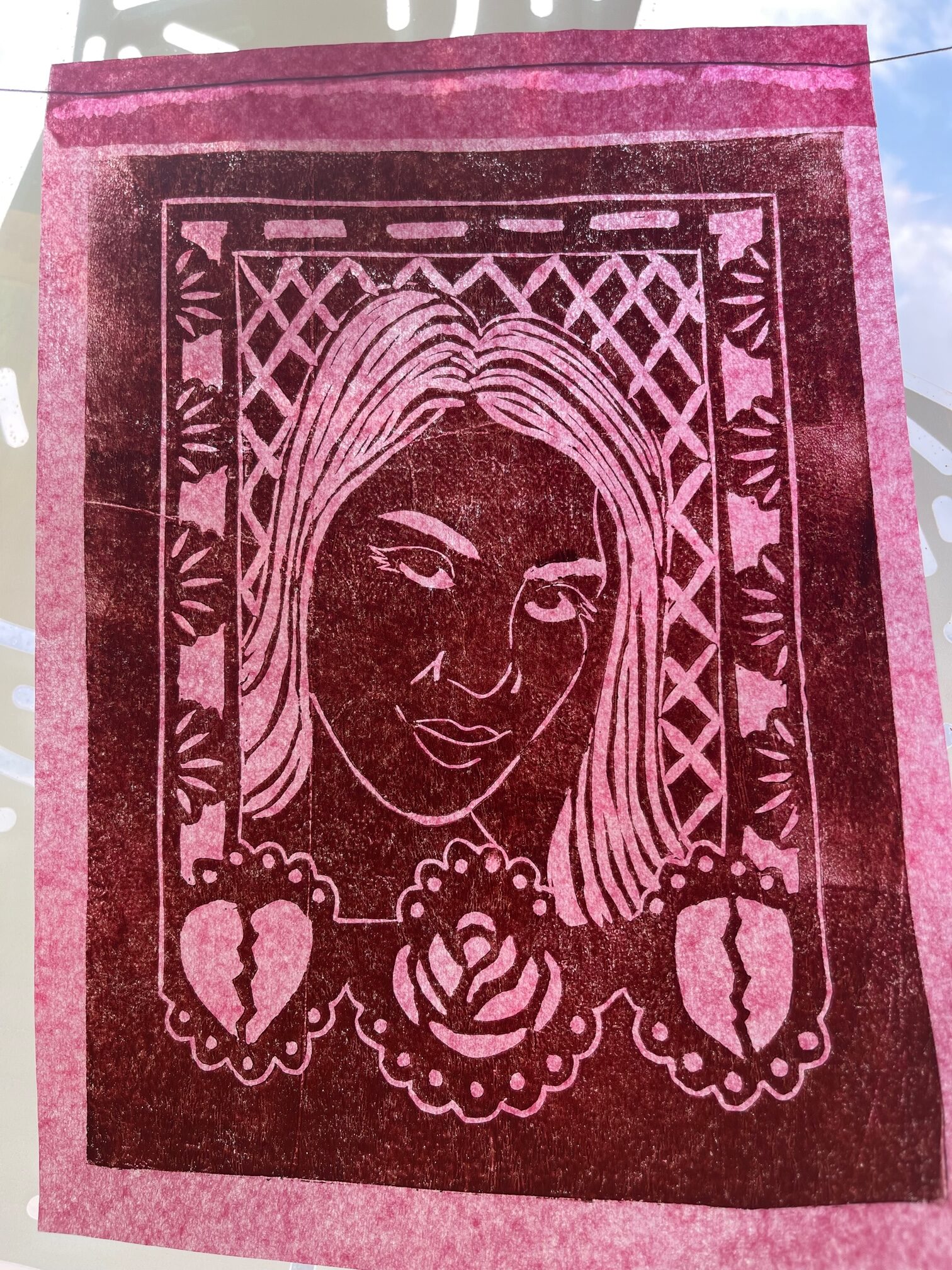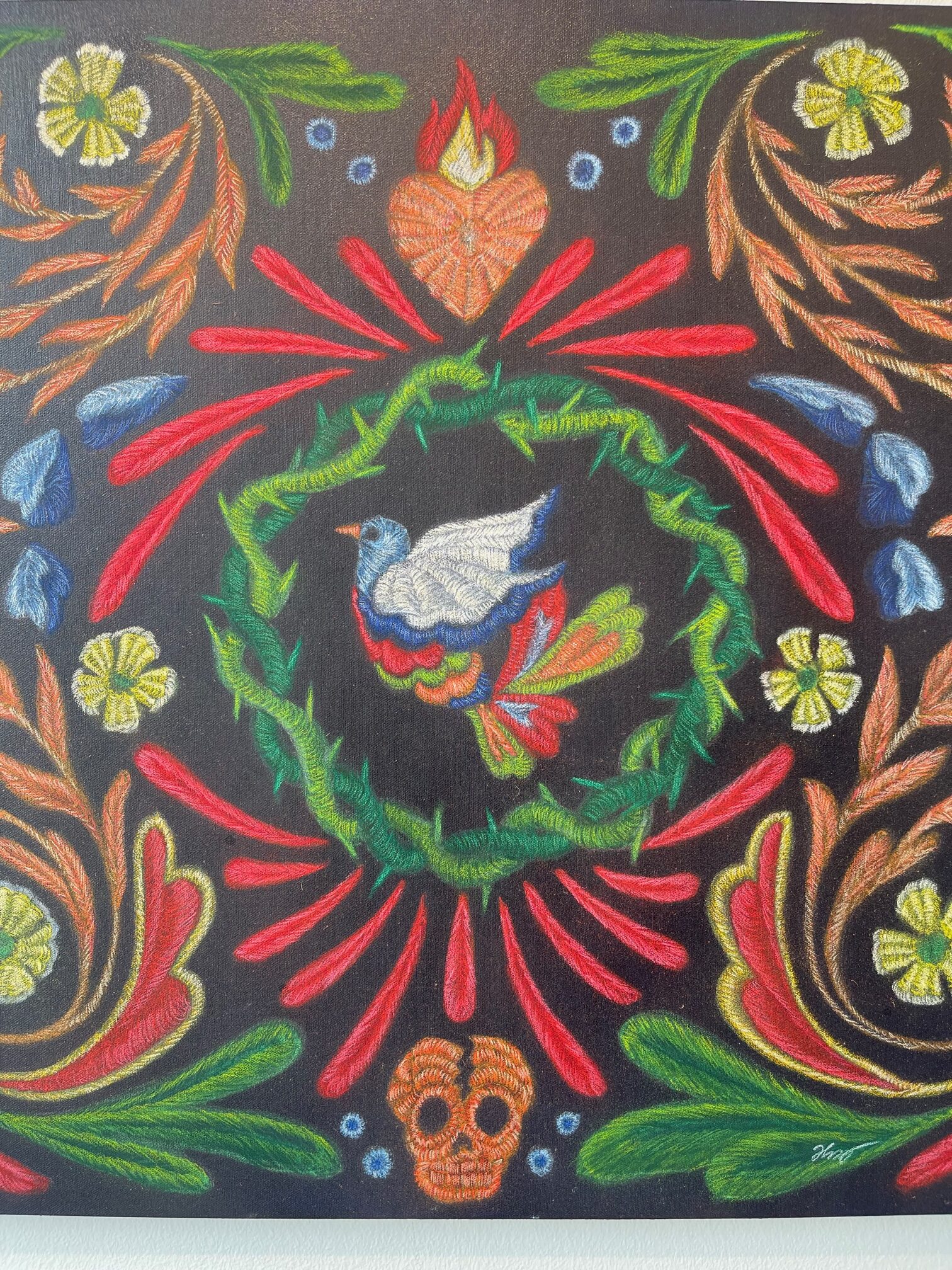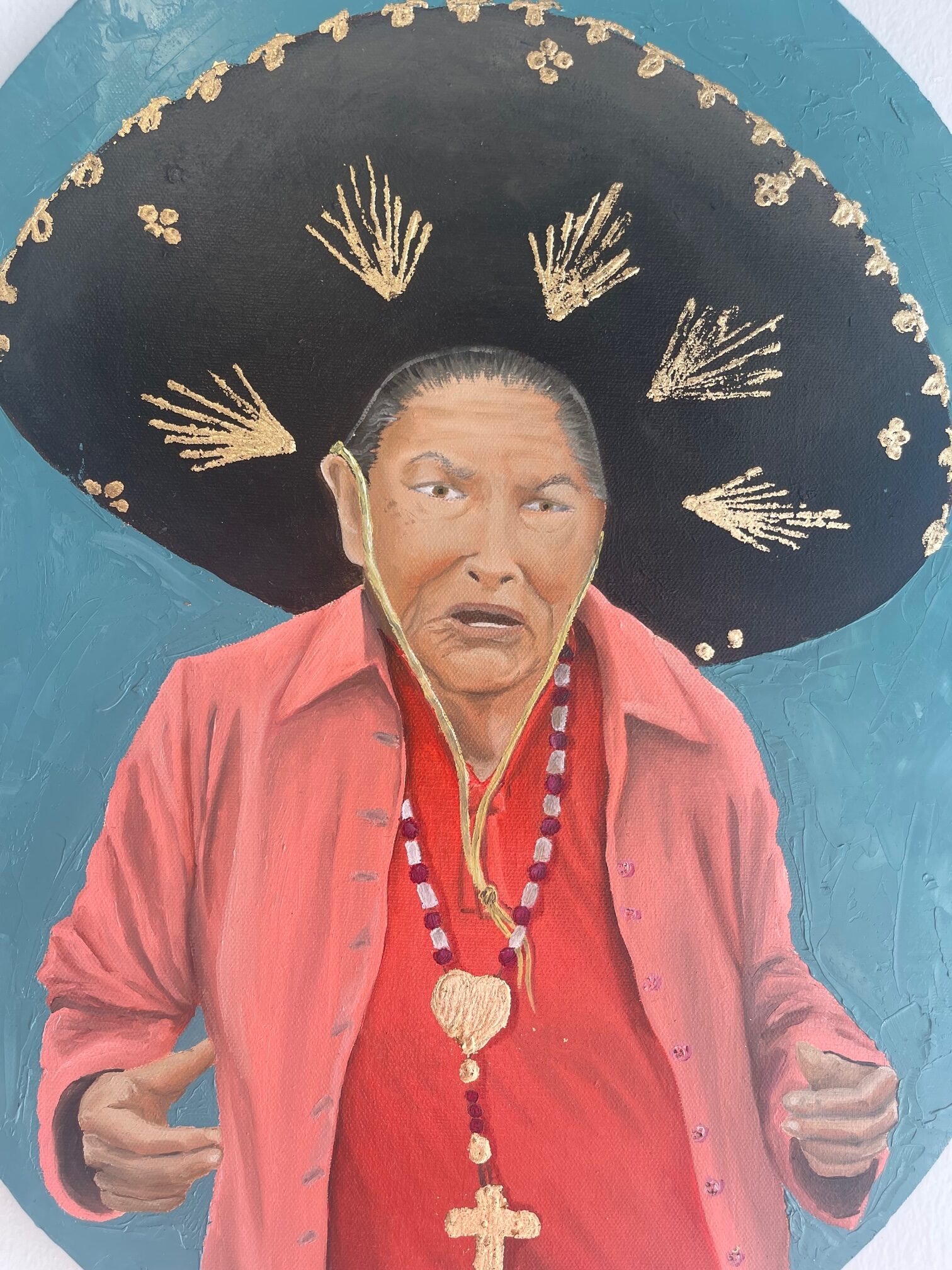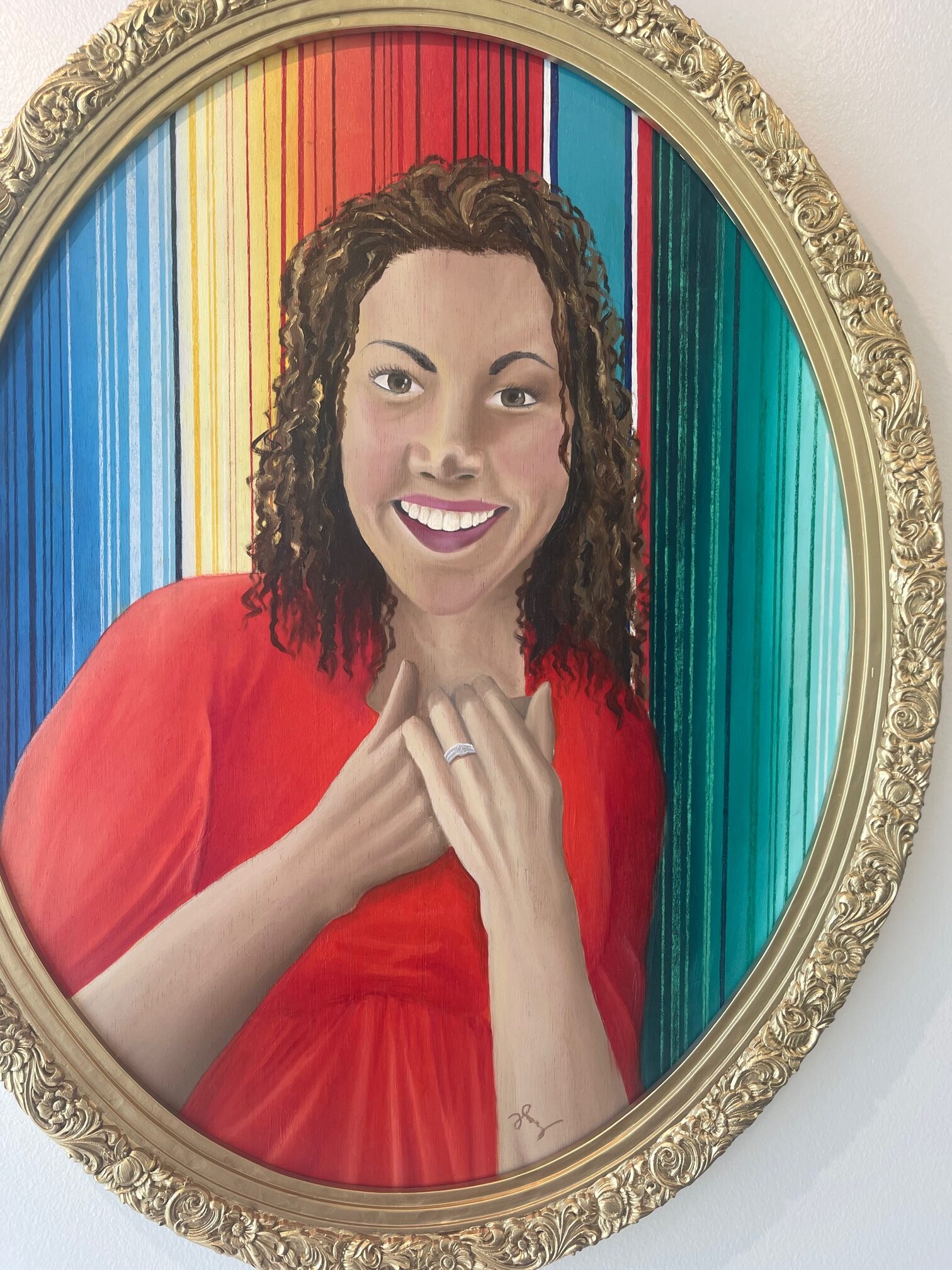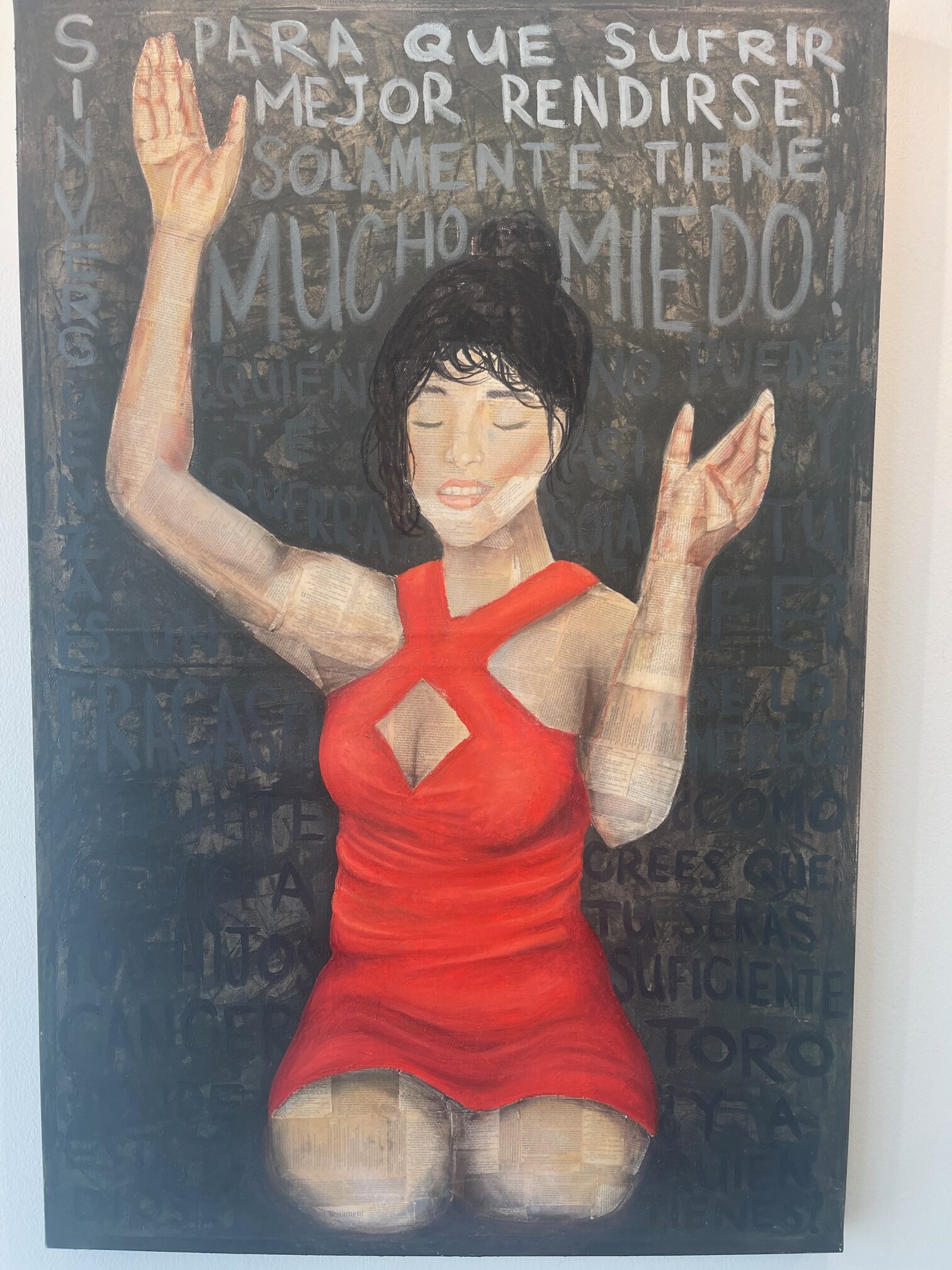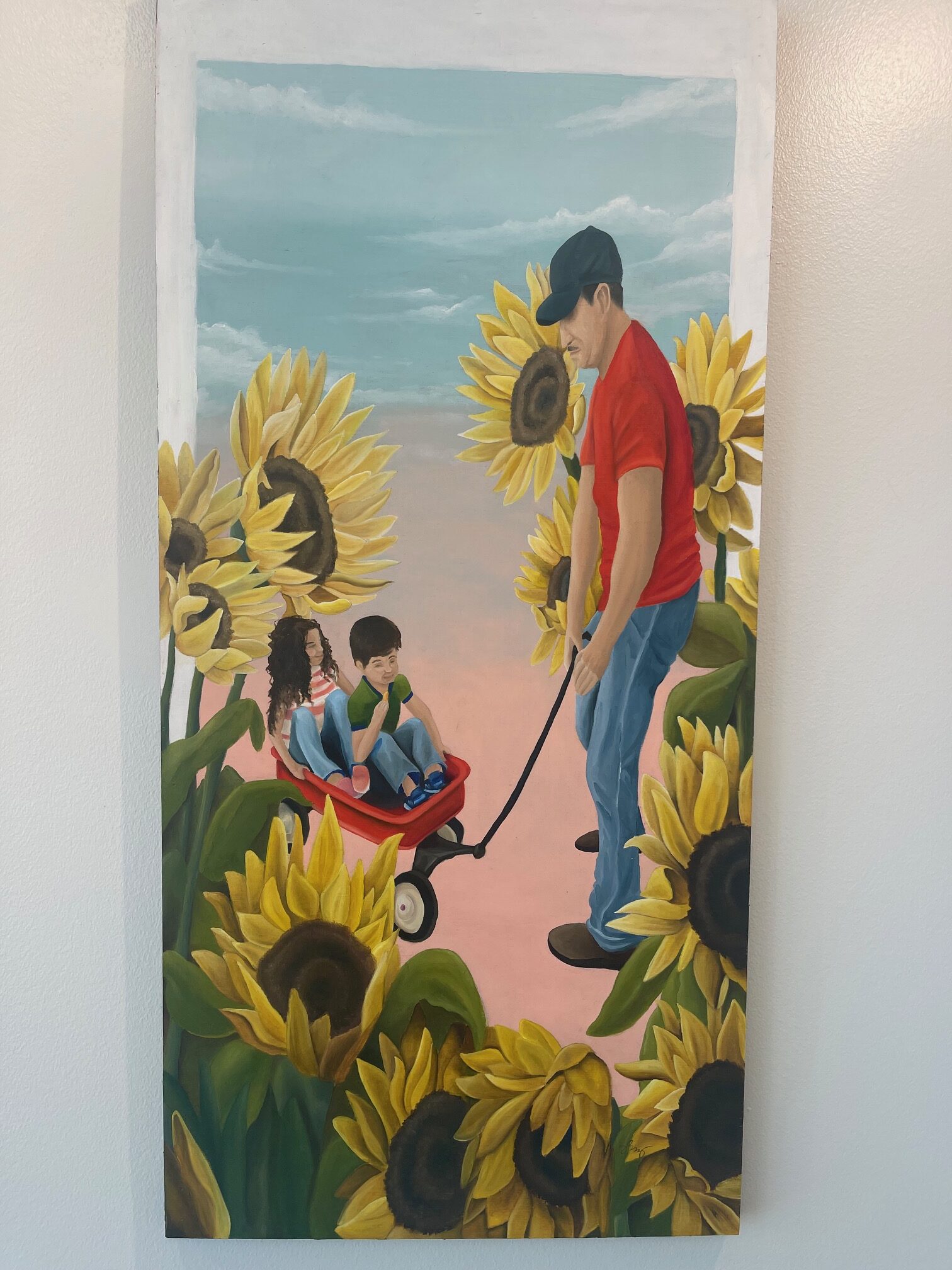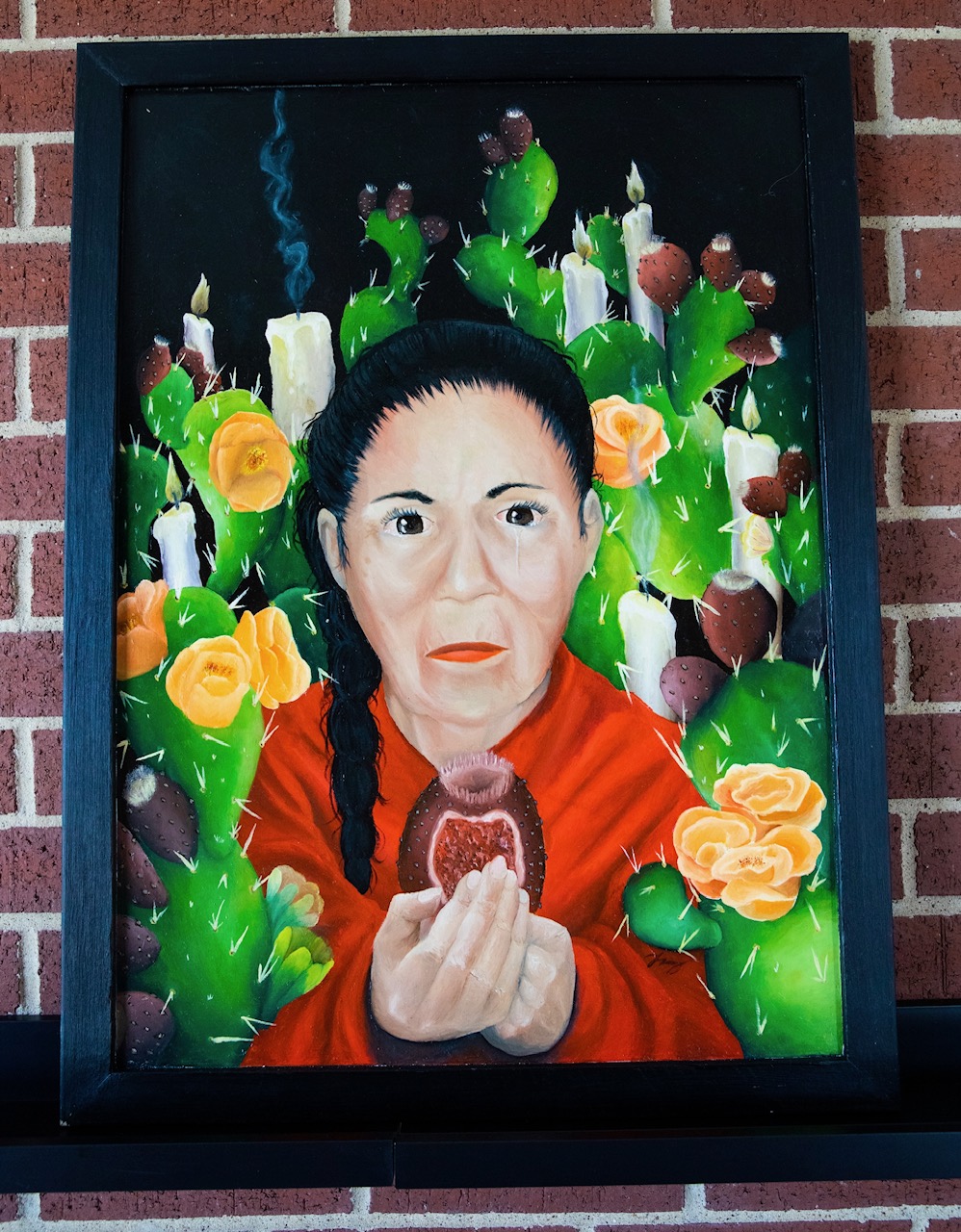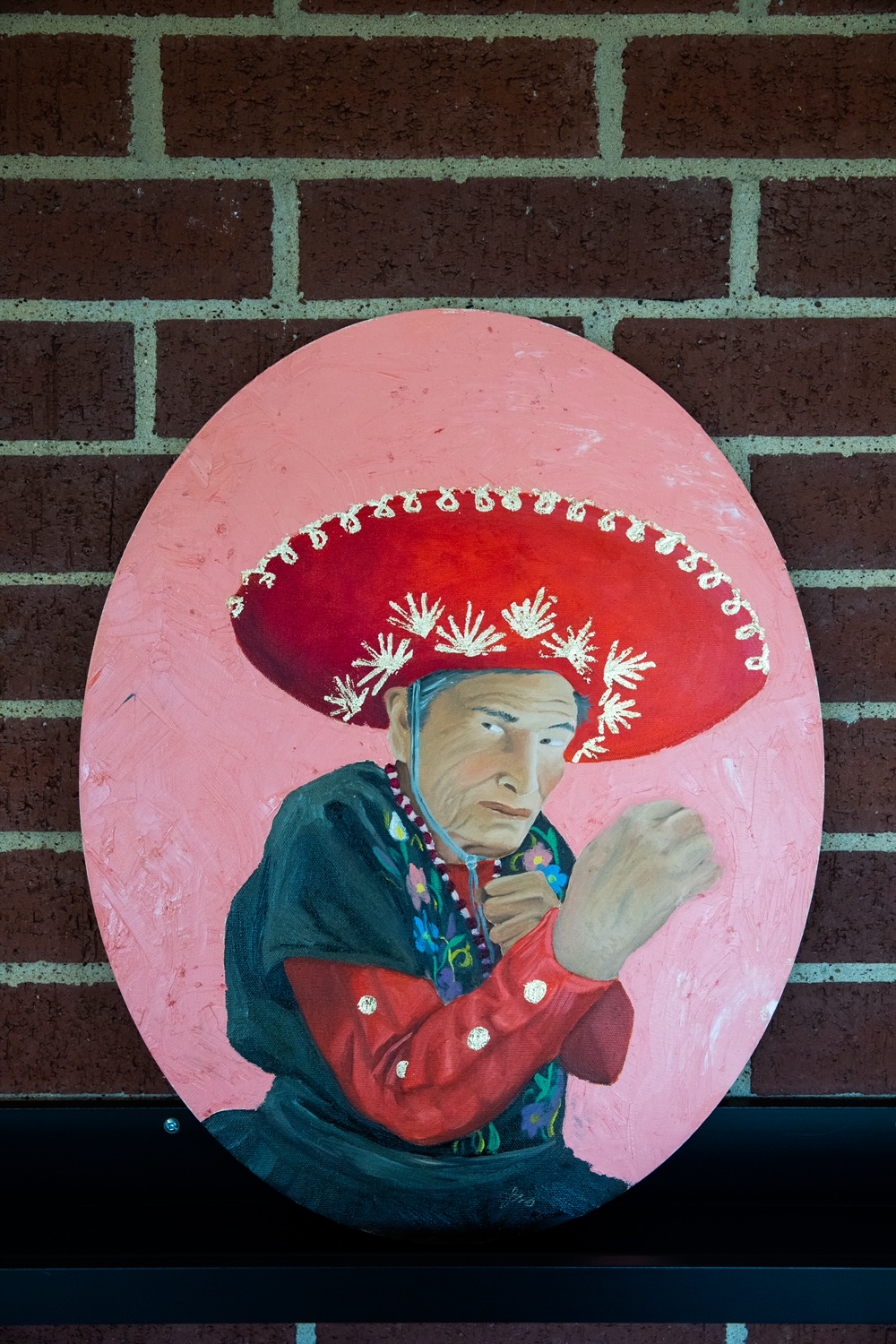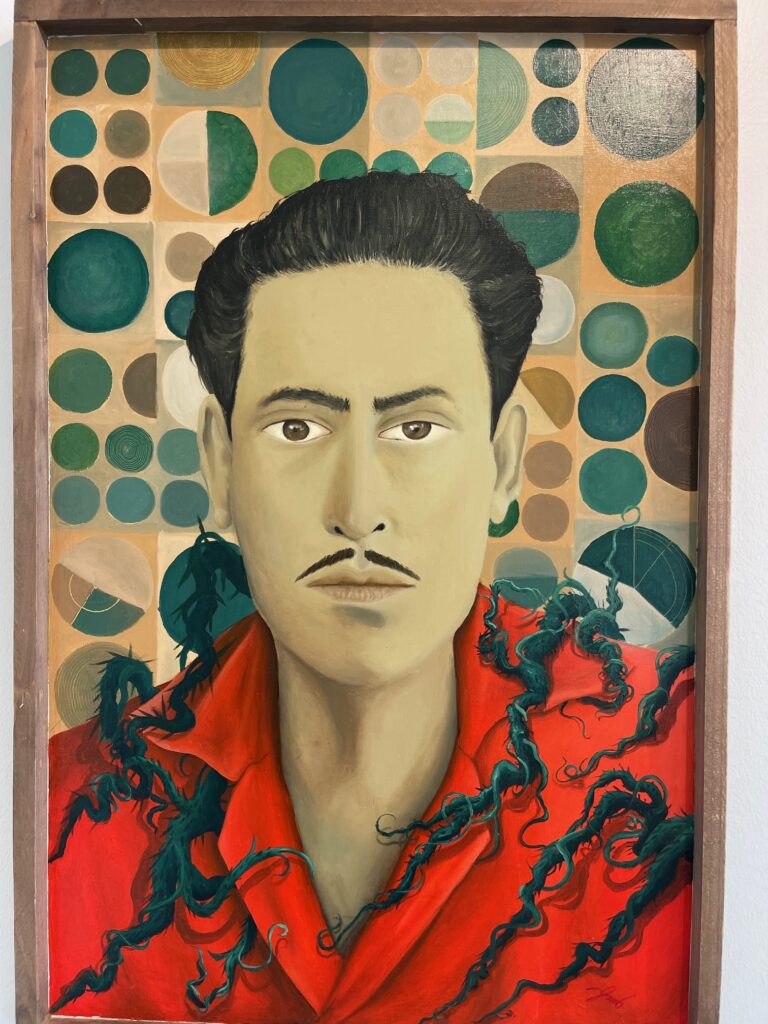 Opening on October 20th at LUZ ART, Family, Culture, & Faith is a collection of memories and stories revisited by Mark Hernandez with a renewed perspective. Hernandez is a married father of four, and an art educator, who serves as a pastor. The portraits explore the complexities of family life, culture, and hardship, with a focus on hope. Looking back on the narratives of his family history through the lens of his Christian faith has allowed him to see beyond the difficulties that used to be his focus, and into the spiritual qualities of the experiences. “God called me to paint how I see Him through the portraits of my family,” he says. The portraits are “a story of how God moved in these people’s lives.” Bold colors and strong mo9fs support the stories that are told on each person’s face. Hernandez’s portraits are a process of healing from cultural and generational wounds.
Opening on October 20th at LUZ ART, Family, Culture, & Faith is a collection of memories and stories revisited by Mark Hernandez with a renewed perspective. Hernandez is a married father of four, and an art educator, who serves as a pastor. The portraits explore the complexities of family life, culture, and hardship, with a focus on hope. Looking back on the narratives of his family history through the lens of his Christian faith has allowed him to see beyond the difficulties that used to be his focus, and into the spiritual qualities of the experiences. “God called me to paint how I see Him through the portraits of my family,” he says. The portraits are “a story of how God moved in these people’s lives.” Bold colors and strong mo9fs support the stories that are told on each person’s face. Hernandez’s portraits are a process of healing from cultural and generational wounds.
Early on in his journey as a creative person, Hernandez did not intend to share his art. His art education began by visiting the local library as a child to study art books and draw. He received encouragement from key people in his life, and through prayer ultimately found that it was 9me for him to release his vision into a larger dialogue with others. Growing up, “I could not see God in the tragedy and hardship,” says Hernandez. He did not find faith in Christianity until adulthood, and “with Christ, I can tell the story and put pigment onto canvas.” At the Dallas Bathhouse and Cultural Center, he applied and was invited to show in two exhibitions (Steamroller Printmaking [2022], El Corazon [2023]). Hernandez’s work sparked conversations about these family stories, and he shared openly about the role of faith in their challenges. One piece (Cosechando Vida/Harvesting Life) was a print of a girl in a field of corn, which was an opportunity “to tell the story of where I come from” and “the lot that God put into the generations that came before me.” This image spoke to his ancestors’ work as laborers after immigrating to Texas. Hernandez views their work as the foundation that allowed him to become who he is today, an artist, educator, and family man.
When recalling his childhood, Hernandez says, “Based on what I know about people, it was a harder life.” Like most children, he was acclimated to his home life and this awareness didn’t develop until years later. His grandparents immigrated from Mexico and worked as a farm hand and a house cleaner. His father was part of a Mexican drug cartel, which complicated their family life. During his senior year in high school, his father chose to leave the family and go back to Mexico due to his involvement in the cartel. In that final conversation, “he told me to take care of my family.” Hernandez was planning to work to support his mother and siblings, but family friends encouraged him to pursue his education instead. Reflecting on this memory, he says, “They knew that if I stayed, I probably would have become like him.” Hernandez became the first high school graduate and college graduate in his family’s history. During his time at Lubbock Christian University, a science professor noticed his creative ability and encouraged him. He created commissions for friends but had no intention of pursuing a career.
Encouragement from his wife led to an experimental mixed-media portrait of her. She continued to encourage him to paint over the years. Hernandez’s journey to creating personal art was influenced by a Mexican history course that he took at Lubbock Christian University. He recalls having a complicated relationship with his self-concept. The main focus of his art practice developed into healing from shame about his childhood, identity, and Mexican culture. In college, Mark was exposed to the diversity of Mexican culture in history and art, and the attention paid to the stories of everyday people. He felt inspired to paint from his own experience, “the emotional parts of what I have seen” he says. Diego Rivera’s portrayal of contemporary culture and ordinary people was a main influence. He also appreciated Jose Clemente Orozco and David Alfaro Siqueiros’s “revolutionary” perspec9ves and pain9ngs that included farm laborers. Hernandez connected to the work immediately and recalls having the realization that “I can do that, too. I have stories like that.” To his students at Legacy Christian Academy, he says, “You will never create a new version of art” and “Art is God’s idea.” As an art teacher, he has facilitated an examination of scripture where students are invited to share visual clues that they interpret from the Bible and create from their perspectives. This is drawn from Hernandez’s unique expression of faith through the lens of his own culture and experiences. This is the key quality that sparks conversation about his work at exhibitions, and creates a space for him to share his family history and culture, and “how Christ redeemed these people.”
Early on in his journey as a creative person, Hernandez did not intend to share his art. His art education began by visiting the local library as a child to study art books and draw. He received encouragement from key people in his life, and through prayer ultimately found that it was time for him to release his vision into a larger dialogue with others. Growing up, “I could not see God in the tragedy and hardship,” says Hernandez. He did not find faith in Christianity until adulthood, and “with Christ, I can tell the story and put pigment onto canvas.”
At the Dallas Bathhouse and Cultural Center, he applied and was invited to show in two exhibitions (Steamroller Printmaking [2022], El Corazon [2023]). Hernandez’s work sparked conversations about these family stories, and he shared openly about the role of faith in their challenges. One piece (Cosechando Vida/Harvesting Life) was a print of a girl in a field of corn, which was an opportunity “to tell the story of where I come from” and “the lot that God put into the generations that came before me.” This image spoke to his ancestors’ work as laborers after immigration to Texas. Hernandez views their work as the foundation that allowed him to become who he is today, an artist, educator, and family man.
When recalling his childhood, Hernandez says, “Based on what I know about people, it was a harder life.” Like most children, he was acclimated to his home life and this awareness didn’t develop until years later. His grandparents immigrated from Mexico and worked as a farm hand and a house cleaner. His father was part of a Mexican drug cartel, which complicated their family life. During his senior year in high school, his father chose to leave the family and go back to Mexico due to his involvement in the cartel. In that final conversation, “he told me to take care of my family.” Hernandez was planning to work to support his mother and siblings, but family friends encouraged him to pursue his education instead. Reflecting on this memory, he says, “They knew that if I stayed, I probably would have become like him.” Hernandez became the first high school graduate and college graduate in his family’s history. During his time at Lubbock Christian University, a science professor noticed his creative ability and encouraged him. He created commissions for friends but had no intention of pursuing a career. Encouragement from his wife led to an experimental mixed-media portrait of her. She continued to encourage him to paint over the years.
Hernandez’s journey to creating personal art was influenced by a Mexican history course that he took at Lubbuck Christian University. He recalls having a complicated relationship with his self-concept. A main focus of his art practice developed into healing from shame about his childhood, identity, and Mexican culture. In college, Mark was exposed to the diversity of Mexican culture in history and art, and the attention paid to the stories of everyday people. He felt inspired to paint from his own experience, “the emotional parts of what I have seen” he says. Diego Rivera’s portrayal of contemporary culture and ordinary people was a main influence. He also appreciated Jose Clemente Orozco and David Alfaro Siqueiros “revolutionary” perspec9ves and paintings that included farm laborers. Hernandez connected to the work immediately and recalls having the realization that “I can do that, too. I have stories like that.”
To his students at Legacy Chris9an Academy, he says, “You will never create a new version of art” and “Art is God’s idea.” As an art teacher, he has facilitated an examination of scripture where students are invited to share visual clues that they interpret from the Bible and create from their own perspectives. This is drawn from Hernandez’s unique expression of faith through the lens of his own culture and experiences. This is the key quality that sparks conversation about his work at exhibitions, and creates a space for him to share his family history and culture, and “how Christ redeemed these people.”
